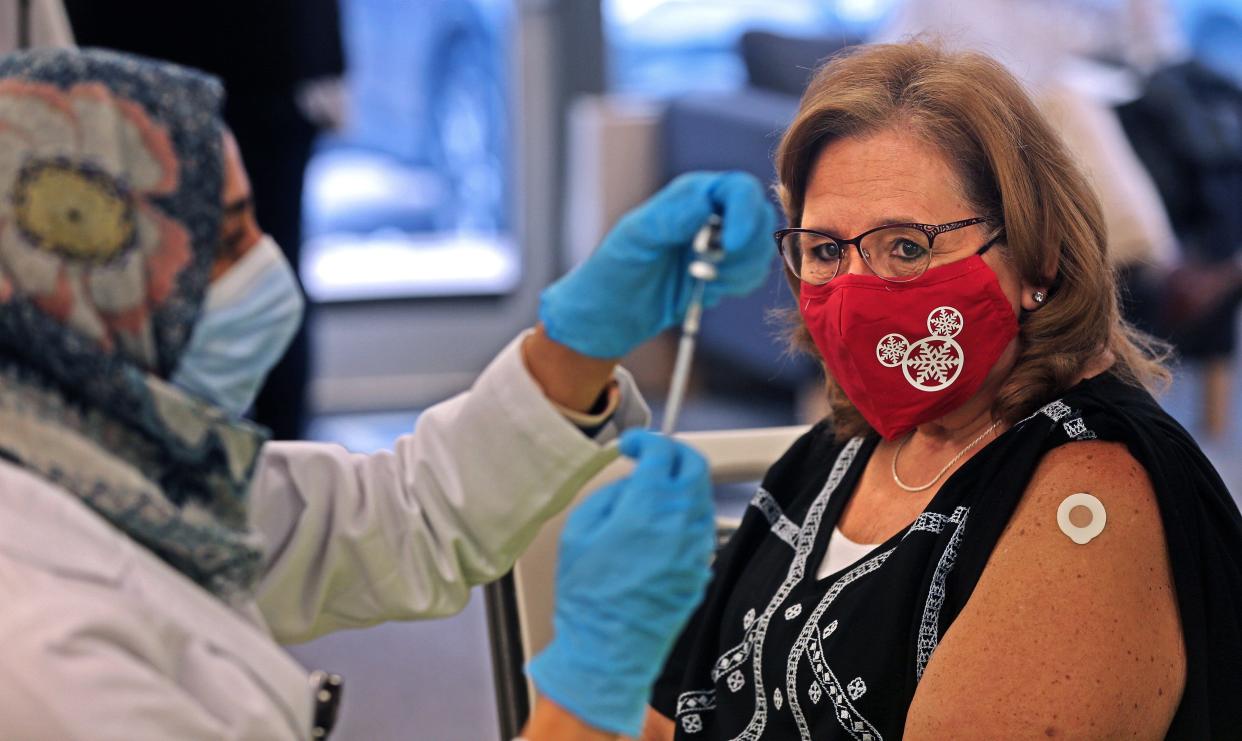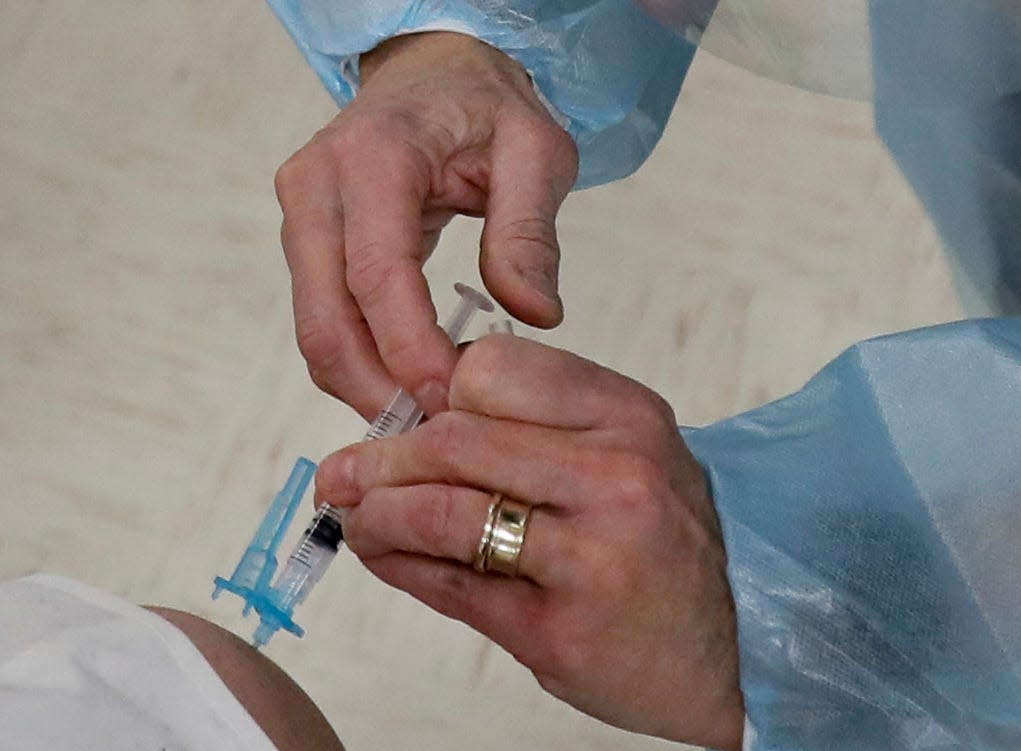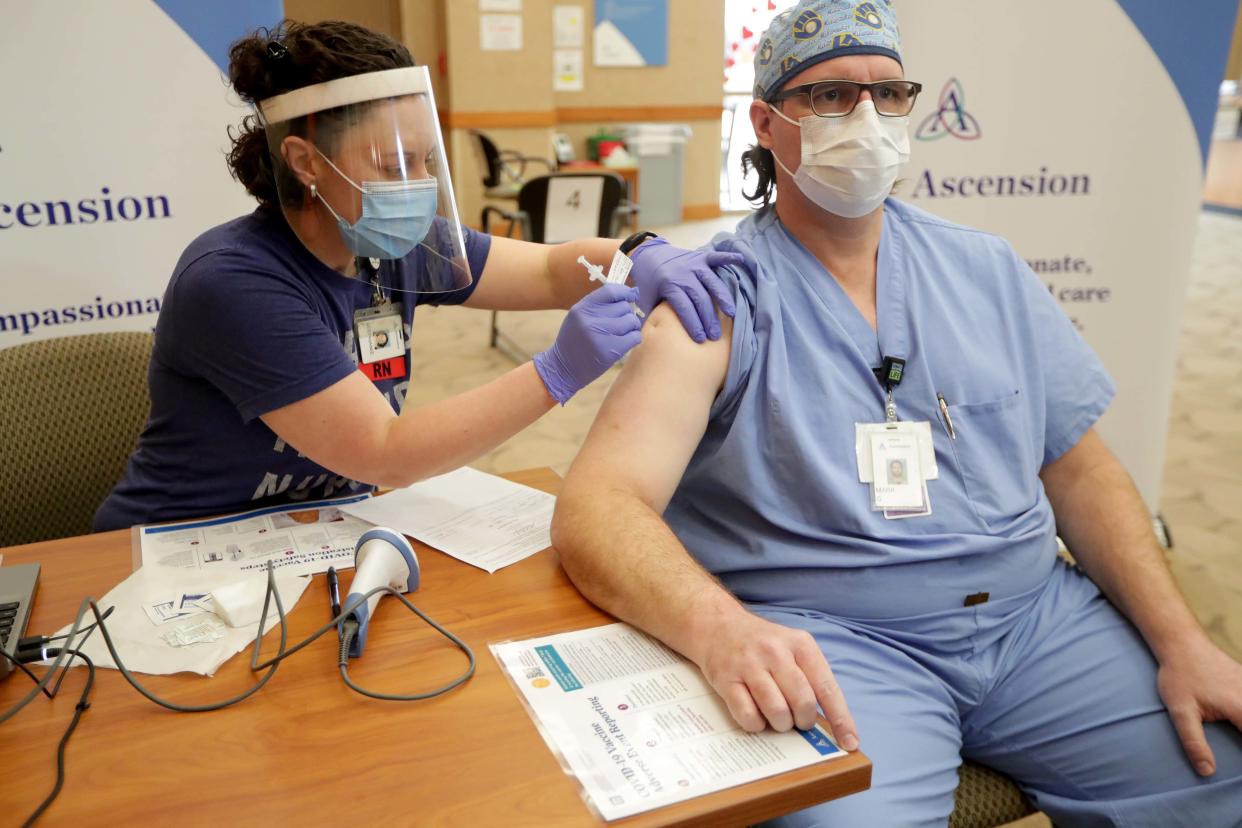What are the new COVID FLiRT variants, and are they in Wisconsin?
It's been almost a year since the COVID-19 Public Health Emergency ended, but the virus is still out there.
In fact, a new set of COVID-19 variants, nicknamed FLiRT, have been detected in wastewater surveillance, according to data from the Centers for Disease Control and Prevention.
Here's what to know about FLiRT and whether it's been seen in Wisconsin.

What are the COVID-19 FLiRT variants?
KP.1.1 and KP.2, nicknamed FLiRT (pronounced "flirt"), are considered omicron variants, said University of Wisconsin-Madison professor of population health sciences Ajay Sethi. The "FL" and "RT" in the name refer to the mutations present in the variants that allow them to evade some of the immunity people have built up from past infections or vaccines.
The mutations are on the tip of the virus' spike proteins, known as the "receptor binding domain." This is the part that connects with the human cell when an infection is established, Sethi explained.
"When those mutations are present, antibodies can't get to the part of the spike protein they want to get to to block infection," he said.
The FLiRT variants are an offshoot of the JN.1 variant, which spread globally over the winter. FLiRT's mutations have allowed it to overtake JN.1 as the country's most dominant variant.
Sethi said he "wouldn't be surprised" if COVID infection rates rise this summer due to FLiRT's mutations and the waning immunity of people who haven't received booster vaccines since the fall.
"It really also comes down to human behavior ...," he said. "If it's a very hot summer and people go indoors, suddenly the conditions become more favorable to spread any kind of germs because people are in a crowded area."
How common are the COVID FLiRT variants?
From April 14 through April 27, KP.2 made up about 25% of COVID cases in the United States, according to the CDC. The JN.1 variant made up 22% of cases in the U.S. in the same two-week span.
In this same period, KP.1.1 made up about 7.5% of COVID cases nationwide.
Are the COVID FLiRT variants in Wisconsin?
KP.1.1 and KP.2 have been detected in Wisconsin clinical specimens sequenced by the Wisconsin State Laboratory of Hygiene, Wisconsin Department of Health Services communications specialist Elizabeth Goodsitt shared in an email.
As of April 1, KP.2 accounted for 8% of cases reported in WSLH's most up-to-date data. However, Sethi said FLiRT variants likely now account for about a quarter of cases in the state as they do nationwide.

Do boosters target the COVID FLiRT variants?
Last fall's COVID boosters targeted the once-dominant XBB.1.5 variant, which was overtaken last winter by JN.1. Boosters are most effective for up to 4 to 6 months, so, if you received yours last fall, its effectiveness has likely waned, Sethi said.
The CDC will decide later this month which variant to target with next fall's booster. Still, if you have not received the most recent booster, you still can. Additionally, seniors and those who are immunocompromised can receive a second dose, as long as it's at least 4 months after their first dose, Sethi said.
The current booster is "less effective" against FLiRT variants, he continued, "but what's even more less effective is if you don't have any antibodies at all. Some antibodies are always better than fewer antibodies, and the booster will help with that."
According to WDHS data, fewer than 17.5% of Wisconsin residents have received at least one dose of the 2023-2024 updated COVID booster vaccine.
What are the symptoms of the COVID FLiRT variants?
FLiRT reportedly has similar symptoms to those of JN.1 which include:
Fever or chills
Cough
Sore throat
Congestion or runny nose
Headache
Muscle aches
Difficulty breathing
Fatigue
New loss of taste or smell
"Brain fog" (feeling less wakeful and aware)
Gastrointestinal symptoms (upset stomach, mild diarrhea, vomiting)
The CDC notes that the list does not include all possible symptoms and that symptoms may change with new variants and vary by person.
In general, the agency says, people with COVID-19 have a wide range of symptoms, ranging from mild to severe illness. Symptoms may appear two to 14 days after exposure.

Latest COVID guidance from the CDC
In March 2024, the CDC updated its COVID-19 guidance so people who test positive for the virus will no longer be directed to isolate at home for five days.
Health officials announced a new policy focusing on actions people can take to reduce spreading a variety of common respiratory viruses, such as influenza, respiratory syncytial virus (RSV) and COVID-19. Those actions include staying home when sick, staying up to date with vaccines, practicing good hygiene and improving indoor air quality.
The change marked the first time the agency has revised its coronavirus guidelines since 2021. It is intended for people and employers, not for hospitals or nursing homes, which have separate guidance, the CDC said.
CDC officials called the change a streamlined approach that’s easier for people to understand and more in line with circulating respiratory viruses that spread the same way and have similar symptoms.
USA TODAY reporter Gabe Hauari contributed to this report.
This article originally appeared on Milwaukee Journal Sentinel: What to know about the new COVID FLiRT variants
